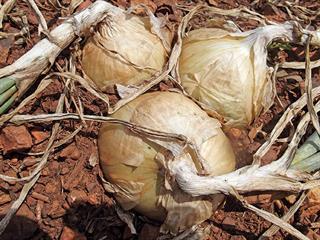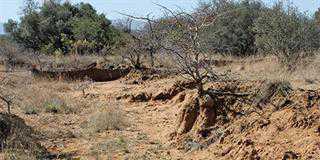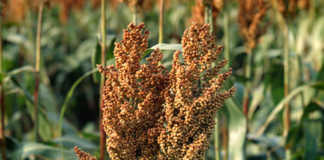
The onion bulb comprises a fan of blue-green leaves that begins to swell when the right day-length is reached. To obtain a good-sized, good quality bulb, the plant must be well fed and watered. Normally, the bigger the plant, the bigger the bulb, but the nutrients in the soil must be in the right proportion. The crop responds well to manure, so this should be used rather than chemical fertiliser for the basic application.
The quality of the soil
South African soils tend to be low in phosphorous. You can rectify this by applying chicken and cattle manure together. Usually, you will also need calcitic lime. If you plant enough to justify it, arrange for a soil analysis; this will show you what the soil needs.
If you are in a cold area, you will have to plant later to avoid bolting. In this case, it’s necessary to stimulate rapid growth to get a good yield. Do this by adding nitrogen in the form of LAN at least once, at a rate of 160kg/ ha. August and September are the best months for stimulating growth in cold areas.
The green sheen
To ensure that the plants are getting enough water, watch the leaves: they should be green and have a healthy sheen. If they change to a duller blue-green, they are not getting enough water. This is likely to occur at the edges of the land or anywhere where the soil dries out more quickly. Learn to recognise this symptom in order to avoid water stress.
Hold off on the water and lan
Later, however, when the bulbs are forming well and almost fully grown, you should create some water stress. This will encourage the bulbs to grow larger. But do not overdo the lack of water, or the bulb will not grow any bigger. In addition, hold back on the LAN as the bulbs are near to maturity. This will also help to form good quality bulbs with thin necks.













